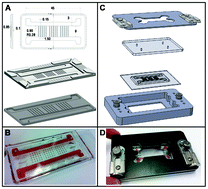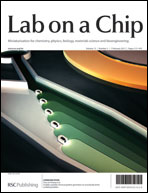During development and regeneration, tissues emerge from coordinated sequences of stem cell renewal, specialization and assembly that are orchestrated by cascades of regulatory signals. The complex and dynamic in vivo milieu cannot be replicated using standard in vitro techniques. Microscale technologies now offer potential for conducting highly controllable and sophisticated experiments at biologically relevant scales, with real-time insights into cellular responses. We developed a microbioreactor providing time sequences of space-resolved gradients of multiple molecular factors in three-dimensional (3D) cell culture settings, along with a versatile, high-throughput operation and imaging compatibility. A single microbioreactor yields up to 120 data points, corresponding to 15 replicates of a gradient with 8 concentration levels. Embryoid bodies (EBs) obtained from human embryonic and induced pluripotent stem cells (hESC, hiPSC) were exposed to concentration gradients of Wnt3a, Activin A, BMP4 and their inhibitors, to get new insights into the early-stage fate specification and mesodermal lineage commitment. We were able to evaluate the initiation of mesodermal induction by measuring and correlating the gene expression profiles to the concentration gradients of mesoderm-inducing morphogens. We propose that the microbioreactor systems combining spatial and temporal gradients of molecular and physical factors to hESC and hiPSC cultures can form a basis for predictable in vitro models of development and disease.

You have access to this article
 Please wait while we load your content...
Something went wrong. Try again?
Please wait while we load your content...
Something went wrong. Try again?


 Please wait while we load your content...
Please wait while we load your content...